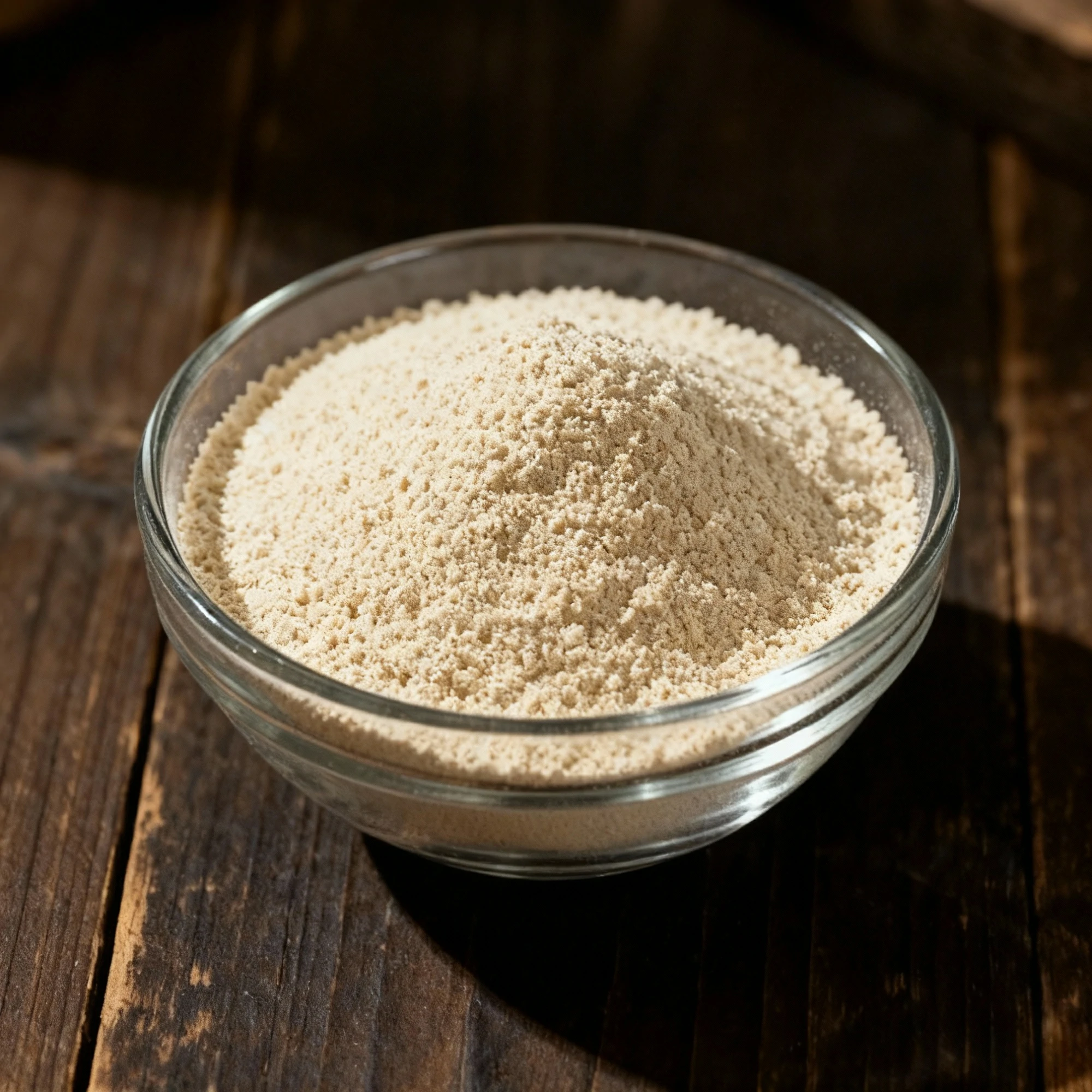

Pectinase
One unit of:20kg/bag
Product Info
What is Pectinase?
Pectinase is an enzyme complex used in the food industry to break down pectin polymers, primarily for clarifying fruit juices, wine, and cider, and enhancing the extraction of fruit components.
How is Pectinase made?
| Step No. | Production Stage | Key Action | Control Point & Note |
|---|---|---|---|
| 1 | Inoculum & Medium Preparation | Cultivate a pure production strain (e.g., Aspergillus niger) and prepare a nutrient-rich liquid medium. Sterilize the medium. | Strain purity is paramount to ensure high yield and prevent off-flavors. The medium must be fully sterilized (typically via autoclave) to eliminate competing microorganisms. |
| 2 | Fermentation (Submerged) | Introduce the inoculum into the sterile medium within a bioreactor. Allow the microorganism to grow and secrete pectinase enzymes. | Control of pH, temperature, aeration, and agitation is critical for optimal enzyme production. Fermentation is monitored and run for a specific duration (e.g., 72-120 hours). |
| 3 | Harvesting & Biomass Separation | End the fermentation process. Separate the microbial cells (biomass) and other solid residues from the enzyme-rich liquid broth. | This is usually achieved through centrifugation or microfiltration. The efficiency of this step directly impacts the purity and yield of the subsequent stages. |
| 4 | Concentration & Purification | Concentrate the cell-free broth to increase the enzyme concentration and remove water and low-molecular-weight impurities. | Ultrafiltration is the key technology used. The membrane's molecular weight cut-off (MWCO) is selected to retain the pectinase enzyme while allowing smaller molecules to pass through. |
| 5 | Standardization & Formulation | Analyze the enzyme activity of the concentrate. Dilute and blend with stabilizers or carriers (like maltodextrin or salts) to achieve the target commercial activity. | Accurate measurement of enzyme activity (e.g., PGU/mL) is essential. Formulation ensures product stability, consistency, and ease of application for the end-user. |
| 6 | Drying (for Powdered Product) | Convert the liquid enzyme concentrate into a stable powder form. | Spray drying is the most common method. Control of inlet and outlet air temperatures is crucial to avoid denaturing (inactivating) the heat-sensitive enzyme. |
| 7 | Packaging & Final QC | Package the standardized liquid or powdered pectinase into sealed, moisture-proof containers. Perform final quality checks. | Final QC tests confirm enzyme activity, microbial purity, moisture content, and heavy metal levels. Packaging must protect the enzyme from moisture and air to ensure shelf life. |
Technical Specifications
| CAS Number | 9032-75-1 |
| Solubility | Soluble in water |
| Storage Conditions | Keep sealed, in dry, ventilated area below 25 °C |
| Shelf Life | 12 Months |
Applications & Usage
Common Applications:
Mechanism of action:
| Parameter | Pectinase |
|---|---|
| Functional Category | Enzymatic Processing Aid; Clarifying Agent; Viscosity Reducer; Texture Modifier |
| Key Ingredients | A complex of enzymes including Polygalacturonase (PG), Pectinesterase (PE), and Pectin Lyase (PL) |
| Mechanism of Action | Enzymatically hydrolyzes the α-(1→4)-glycosidic bonds within the pectin polymer backbone (polygalacturonic acid). Pectinesterase de-esterifies galacturonic acid units, making the pectin chain more susceptible to depolymerization by polygalacturonase and lyases, which cleave the chain into smaller, soluble oligosaccharides. |
| Application Effect in Product | Reduces viscosity and turbidity in fruit juices and wines for enhanced clarity and yield; improves juice extraction efficiency; softens plant tissues in fruit/vegetable processing to prevent gelation and improve texture; aids in the maceration of plant materials for purees and concentrates. |
Comparison:
| Product Name | Category/Type | Key Features | Strengths (vs peers) | Weaknesses (vs peers) | Best Use Cases | Why Choose |
|---|---|---|---|---|---|---|
| Pectinase | Pectin-degrading Enzyme | Breaks down pectin in plant cell walls, reducing viscosity and improving clarity of liquids. | Unmatched for clarifying fruit juices and wines by specifically targeting pectin haze. Increases juice yield from pulp. | Ineffective against other major plant polymers like cellulose or starch. Niche application primarily for fruit/vegetable processing. | Juice and wine clarification, increasing fruit press yield, coffee and tea fermentation, extracting plant oils. | To specifically eliminate pectin-related cloudiness or viscosity in fruit-derived liquids. |
| Cellulase | Cellulose-degrading Enzyme | Hydrolyzes cellulose, the primary structural component of plant cell walls, into glucose. | Essential for breaking down tough, fibrous plant material. Unlocks sugars from biomass for fermentation. Often used with pectinase for total breakdown. | Does not break down pectin, so it cannot clarify pectin-based haze. Can be slow to act on highly crystalline cellulose. | Biofuel production, fruit softening, improving digestibility of animal feed, textile "biostoning". | When the goal is to degrade the main structural integrity of plant matter, especially for biofuel or feed applications. |
| Amylase | Starch-degrading Enzyme | Breaks down starch into simpler sugars like glucose and maltose. | Crucial for converting starch into fermentable sugars. Very common and cost-effective for brewing, baking, and syrup production. | No effect on structural polysaccharides like pectin or cellulose. Does not help with juice extraction from fruit pulp. | Brewing (mashing), baking (dough conditioning), producing sweeteners (e.g., HFCS), removing starch haze from juices. | To convert starch into sugars for fermentation or sweetening, or to clarify starch-based cloudiness. |
| Hemicellulase | Hemicellulose-degrading Enzyme | Breaks down hemicellulose, a diverse group of polymers binding cellulose fibers together. | Acts synergistically with cellulase and pectinase for more complete plant wall degradation. Improves dough handling in baking. | Less effective on its own as it targets the 'matrix' polymers rather than the primary structural or gelling components. | Animal feed (improving nutrient absorption), baking (dough conditioning), supporting juice and oil extraction. | As a supplementary enzyme to achieve higher yields or for specific improvements in feed or baking applications. |
Technical Documents
Available Documentation
Spec Sheet, CoA, MSDS available
Safety Data Sheet (SDS)
Available
Certificate of Analysis (COA)
Quality assurance documentation
Technical Data Sheet
Detailed technical specifications